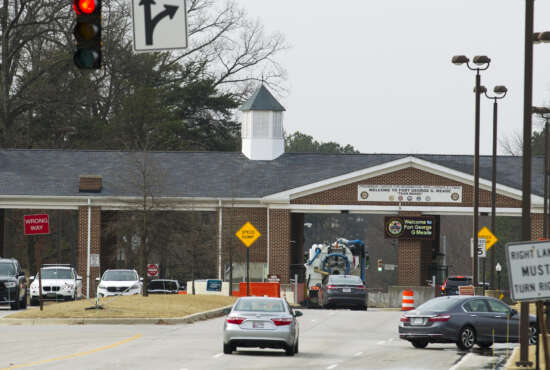Housing at the top of the Army’s agenda this coming year
In today's Federal Newscast, the Army is putting a lot of focus on fixing its housing this year.
- The Army is putting a lot of focus on fixing its housing this year. The service has allocated $2.1 billion for various barracks projects. The plan includes constructing six new barracks, undertaking 20 renovation and modernization efforts and funding full sustainment of all barracks. The Army has also contracted third-party organizations to inspect barracks to provide an unbiased assessment of the state of the barracks. Over the next two years, the Army will also hire 200 civilian managers and add 420 staff to the Directorate of Public Works and installations. In addition, the service plans to spend several billion dollars over the next two years on family housing improvements.(Army focuses on fixing housing - AUSA Conference)
- Agencies now have their results in hand for the 2024 Federal Employee Viewpoint Survey. But to actually make improvements for their employees, experts say agency leaders have to analyze the survey findings and make adjustments as needed. This time around, they won’t be on their own in doing that. Later this fall, the Chief Human Capital Officers (CHCO) Council plans to publish a FEVS “toolkit” for agencies. The toolkit will include recommendations for how leaders can make changes based on FEVS. It will also detail strategies for improving communication with employees.(Federal employee engagement, satisfaction on the rise once again in 2024 FEVS - Federal News Network)
- In the aftermath of Helene and Milton, agencies now have more flexibility to staff up. The Office of Personnel Management has authorized emergency hiring for agencies this hurricane season. They can now onboard more employees to help with hurricane response and recovery efforts. Agencies can hire feds to respond to any hurricane this season — not just in response Helene and Milton. The hired employees will be able to work for an agency, such as FEMA, for up to two years, as needed. FEMA Administrator Deanne Criswell said the agency is using all avenues to recruit in local communities. “We use every flexibility within our hiring authorities to help meet the community’s needs,” Criswell said during a press conference Friday.(Emergency hiring situation resulting from the 2024 hurricane season - Office of Personnel Management)
- A group of think tanks is recommending the White House launch a pilot project to create a “National Cyber Feed.” The Cloud Safe Task Force is recommending the major U.S. cloud providers integrate their cyber defense dashboards into the proposed feed. The data would provide a new way to monitor cyber risks in real-time across multiple critical sectors. The feed would be provided to key federal partners, like the Office of the National Cyber Director and the Cybersecurity and Infrastructure Security Agency. The task force recommends the White House launch a pilot in 2025 before moving to a full-scale program the following year. (National Cyber Feed implementation recommendations - Cloud Safe Task Force)
- Now that the Pentagon has finalized a key cyber certification rule, industry groups are turning their attention to implementation. The Defense Department made several key tweaks to the final Cybersecurity Maturity Model Certification rule published last week. They include clarification around the role of cloud service providers, and the allowance for some exceptions to the cyber standards. Now industry groups are raising concerns about how the CMMC requirements will roll out to tens of thousands of defense contractors. DoD expects to finalize a proposed CMMC acquisition rule next year.(DoD ‘fine tunes’ final CMMC program rule; industry turns attention to implementation - Federal News Network)
- Many soldiers miss out on continuation pay due to simply not knowing the benefit is available to them. Continuation pay is a bonus available to service members who commit to serving additional years between their 7th and 12th year of service. The benefit is an entitlement service members have to ask for. If a service member meets the eligibility criteria and applies for the pay within the required timeframe, the military is obligated to provide the payout as part of the Blended Retirement System. Service members are not eligible to apply for the benefit after 12 years of service. There is currently no exception policy to retroactively grant the payment and any changes would require legislative action.(Soldiers continue to miss out on their continuation pay - AUSA Conference)
- The Army is encouraging contracting officers and program managers to engage more regularly and confidently with industry associations and other related groups. A new memo from Kim Beuhler, the Army's small business director, attempts to continue to "bust the myth" that there are prohibitions against meeting with these groups. Beuhler said the Federal Acquisition Regulations authorizes and encourages a broad range of vendor communications and working with associations can help align the Army's needs with industry capabilities. She said over the years engagement and collaboration with these organizations has proven to provide government employees valuable industry knowledge and feedback about DoD programs.
- The General Services Administration is considering making contractor performance metrics public. GSA's Federal Acquisition Service is taking the temperature of agencies and vendors alike to see what, if any, information about contractor performance metrics would be valuable if made public. FAS is asking agency customers to provide feedback around seven questions, including what performance information would help you choose a contractor and how could FAS display those metrics. FAS also is seeking feedback from vendors. Among the questions for contractors to consider include what are reasonable metrics and whether FAS should use a star, percentage or color rating to demonstrate performance. Feedback on the request for information is due by November 22.(Contractor performance information for GSA eCommerce and digital platforms - General Services Administration)
Copyright © 2025 Federal News Network. All rights reserved. This website is not intended for users located within the European Economic Area.
Eric White
Eric White is news anchor and Federal Drive producer at Federal News Network.
Follow @FEDERALNEWSCAST





